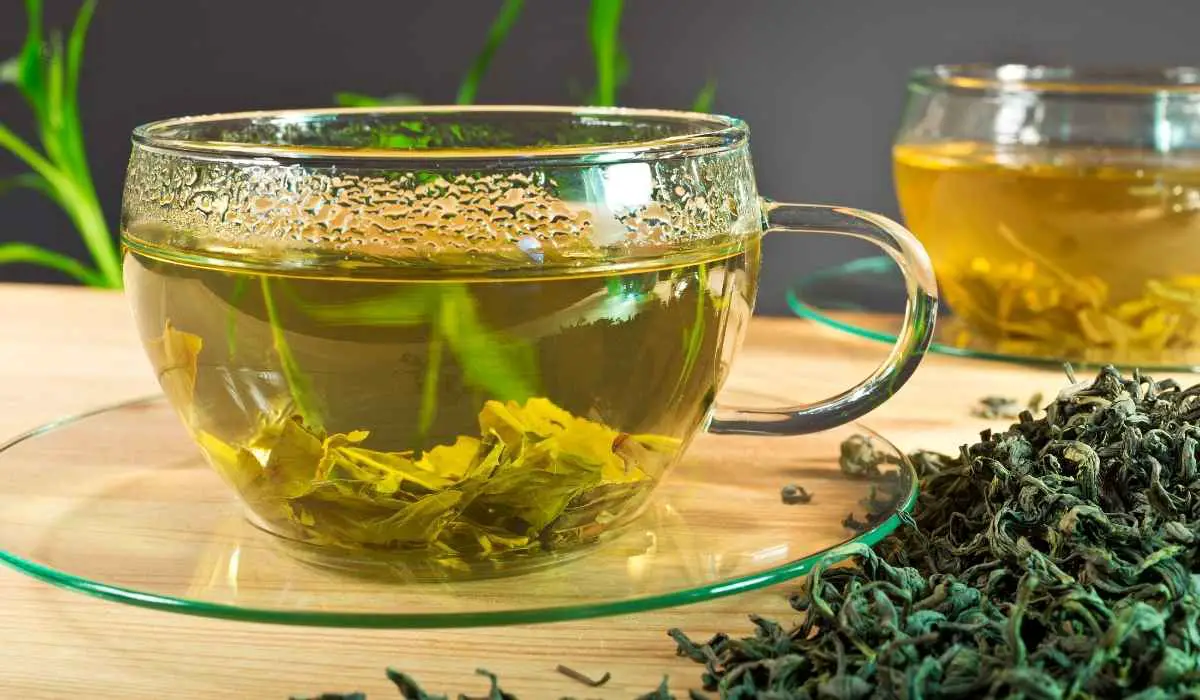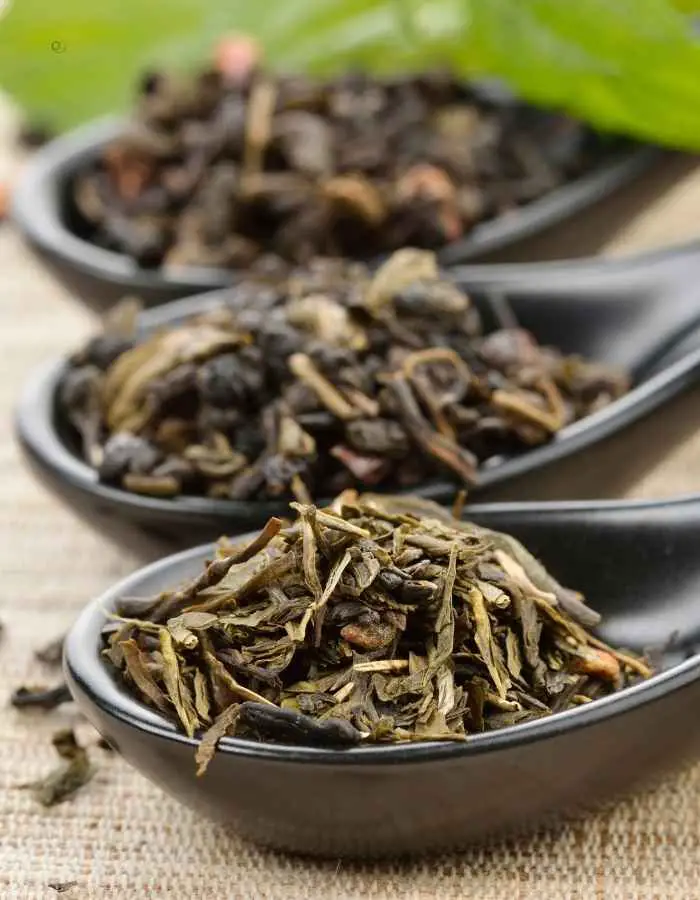To truly find the loose leaf tea to water ratio grams, getting the right balance between tea leaves and water is crucial. The difference between a perfectly brewed cup and a disappointing one often comes down to this simple ratio.
If you use too many leaves, the taste can be overpowering and bitter; too few, and it’ll be weak and lackluster.
Get the ideal loose leaf tea to water ratio in grams, whether you’re brewing a single serving or preparing a larger pot.
With this knowledge, you’ll be able to craft the perfect cup every time—full of rich, balanced flavor and fragrance.
Why the Tea-to-Water Ratio Matters:
The tea-to-water ratio is essential for brewing the perfect cup of loose leaf tea. An incorrect ratio can significantly impact the flavor and aroma.
Too much tea can lead to a harsh, overly strong brew, while too little results in a dull, weak infusion.
The right ratio ensures the water extracts the full spectrum of flavors and essential oils from the leaves, creating a balanced and aromatic cup. Since different teas vary in size, texture, and processing, each type requires its own optimal ratio.
Mastering this balance helps you get the most out of your loose leaf tea, providing a richer, more satisfying experience with every brew.
Loose Leaf Tea To Water Ratio Grams:
The correct tea-to-water ratio in grams is key to brewing a flavorful cup of loose leaf tea.
A common guideline is to use about 2-3 grams of loose tea for every 6-8 ounces (180-240 ml) of water. This ratio can be adjusted depending on personal taste and the type of tea.
For delicate teas like white or green tea, you might prefer to use around 2 grams per 6 ounces to avoid bitterness. For more robust teas like black or oolong, 3 grams per 6 ounces is ideal. Herbal teas, which often have larger leaves, typically require around 4 grams per 6 ounces to bring out their full flavor.
Using a kitchen scale to measure the tea ensures accuracy and consistency, especially when brewing multiple cups.
Keep in mind that factors such as water temperature and steeping time also influence the final brew, so don’t hesitate to experiment and find the ratio that best suits your taste.
Factors That Can Influence Tea-to-Water Ratio:
Several factors can affect the ideal tea-to-water ratio, helping you fine-tune your brew to your preferences:
- Type of Tea: Each tea has its own characteristics. Lighter teas like white and green tend to require less tea, while stronger teas like black, oolong, or herbal often need a higher ratio for a balanced flavor.
- Leaf Size: Larger, whole leaves expand during steeping and typically need more water, while smaller broken leaves release their flavor faster, so they may require less tea.
- Water Temperature: Hotter water extracts flavors more effectively. Stronger teas, such as black or oolong, can handle higher temperatures and may benefit from a slightly higher tea-to-water ratio.
- Brewing Time: The longer you steep the tea, the more flavor is released. If steeping for a longer time, you might need less tea since the prolonged brewing will already intensify the flavor.
- Personal Preference: Ultimately, your preferred tea strength matters most. Some may enjoy a stronger, richer brew with more tea, while others may prefer a more subtle, milder cup. Adjust the ratio to suit your taste.
Read Next: How Many Tea Bags For 6 Cups
Common Mistakes to Avoid:
Making a great cup of loose leaf tea requires attention to detail, and avoiding these common mistakes can help you brew the perfect cup:
- Wrong Tea-to-Water Ratio: Too much tea makes the brew overly strong and bitter, while too little results in a weak, bland cup. Always measure your tea according to the type and recommended ratio.
- Ignoring Tea-Specific Needs: Each type of tea has unique requirements. For instance, white and green teas need fewer leaves than robust black or herbal teas. Overlooking these differences can lead to an unbalanced flavor.
- Inappropriate Water Temperature: Water that’s too hot can scorch delicate teas like green or white, while cooler water won’t extract the full flavor from black or oolong teas. Use the correct temperature for the tea you’re brewing.
- Improper Steeping Time: Over-steeping can make tea taste bitter, while under-steeping leaves it flat and flavorless. Follow the recommended steeping time for the specific tea type to get the best flavor.
- Using Poor-Quality Water: The water you use has a significant impact on taste. Hard or heavily treated water can dull the tea’s flavor, so opt for filtered or spring water to enhance your brew.
Avoiding these mistakes will help you enjoy a rich, well-balanced, and satisfying cup of tea every
Personalizing:
When I make loose leaf tea, I usually use around 2 to 3 grams of tea for every 8 ounces (240 ml) of water. This creates a flavorful cup, though I adjust the amount based on how strong I prefer my brew.
Take Away:
- In this post, we’ve covered the perfect loose leaf tea to water ratio, recommending 2 to 3 grams of tea per 8 ounces (240 ml) of water for a flavorful cup.
- We also shared tips on adjusting this ratio depending on how strong or mild you like your tea.
- Excited to brew your perfect cup of loose leaf tea? Start with the recommended ratio, then fine-tune it to suit your taste!
CTA:
- Join us on Pinterest for more tea inspiration, tips, and creative ideas. Don’t forget to sign up for our newsletter to receive exclusive updates and expert tea advice directly to your inbox!
FAQs:
Q. How much loose leaf tea should I use for one cup?
For 8 ounces (240 ml) of water, use 2 to 3 grams of loose leaf tea to achieve a balanced taste.
Q. Can I use more than 3 grams of tea?
Yes, if you prefer a stronger brew, you can use up to 4 grams per cup.
Q. Does the type of tea affect the amount of loose leaf tea needed?
Yes, stronger teas like black or oolong may need slightly more tea, while lighter teas like green or white may need less.
Q. What happens if I use too much tea?
Using too much can result in an overly strong, bitter flavor, especially with more delicate teas.
Q. Can I adjust the loose leaf tea ratio for a bolder flavor?
Definitely! You can increase the tea amount or extend the steeping time for a richer flavor.
Q. How do I measure loose leaf tea accurately?
A digital scale provides the most accurate measurement, but a teaspoon typically holds about 2 grams of loose leaf tea.


